SCHOOL OF OUR DIVINE
INFINITE BEING
Polytheistic Monism - Divine Theurgy - Oracle to the Gods
Raja-Kundalini, preparatory alignment for the
practice of Ritual Theurgy
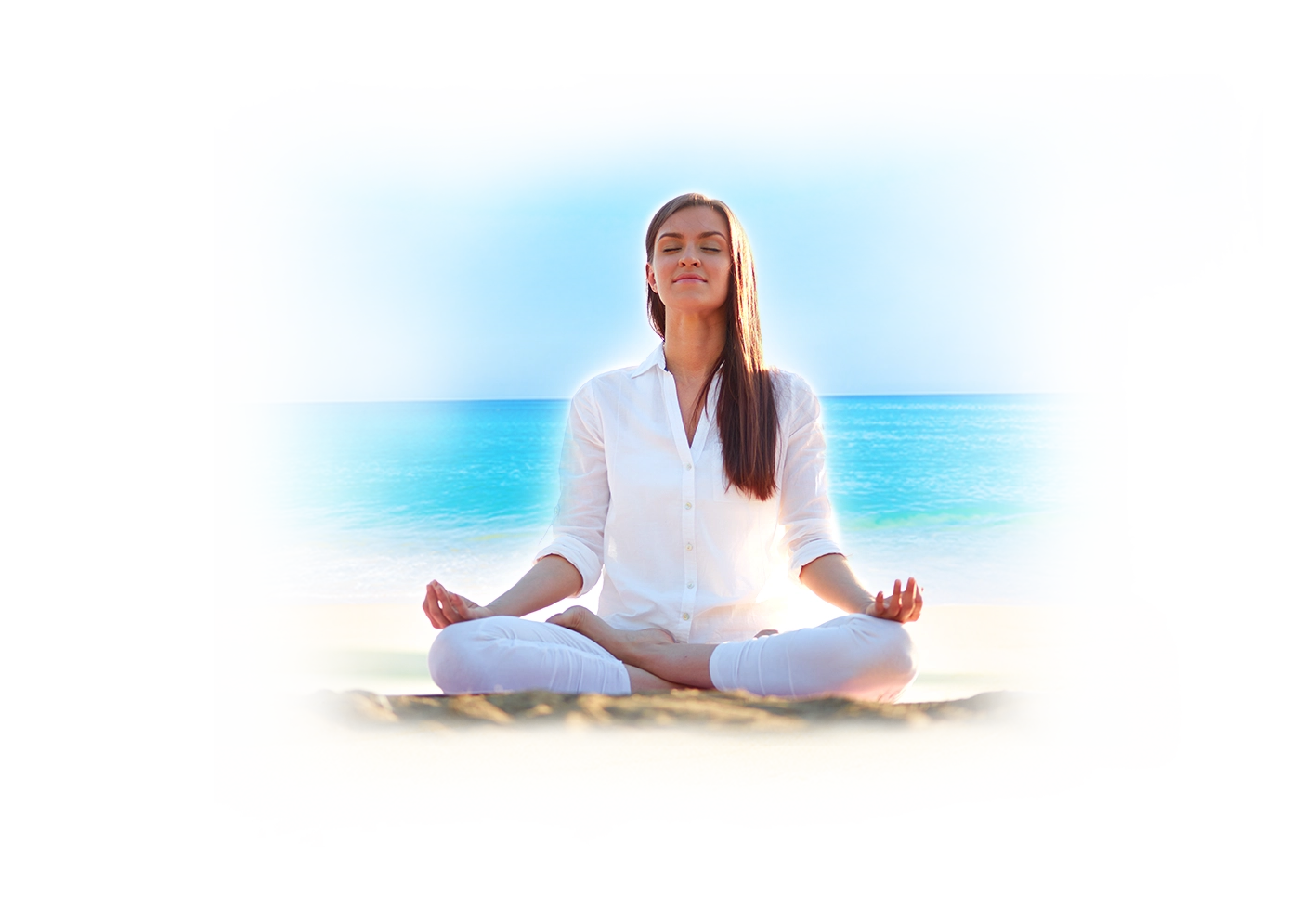
“The Demiurge is an activity, specifically the activity that divides the One and unifies the Many. For Platonists, the Demiurge is the weaving of opposites, the endless circling and pulse of procession and return that creates our world.' The cosmos is his agalma, the shrine in which this activity dwells (Timaeus 37). For theurgists, Nature is the body of this god whose activity and breath they come to recognize as their own. It is from this perspective, with theurgist homologous to the cosmos and exercising godlike power, that we may turn to a different tradition, born in a different culture and to a later time, Tantra. I have been struck by the remarkable similarities between Tantric and theurgic practices as well as by parallels in their respective metaphysical contexts”.
Gregory Shaw, Platonic Tantra - Theurgists of late Antiquity
The practices allocated here in our essay are a combination of Raja Yoga and Tantric Kundalini practices in a limited exposition of either discipline. The Raja-Kundalini of our school is a preparatory work for developing the centrality of the light body and the mandala spiritual development of spherical embodiment.
The Yogic practices in all of their forms are always a genuine companion to the practices of ritual Theurgy, and further investigation into either of these disciplines, and other forms of Yoga, are encouraged. This has been recognized by most of the western mystery traditions over the last century, especially the Thelemic schools of Aleister Crowley, the Theophocy schools of Helena Blavatsky and the New Thought Movement writings of William Walker Atkinson.
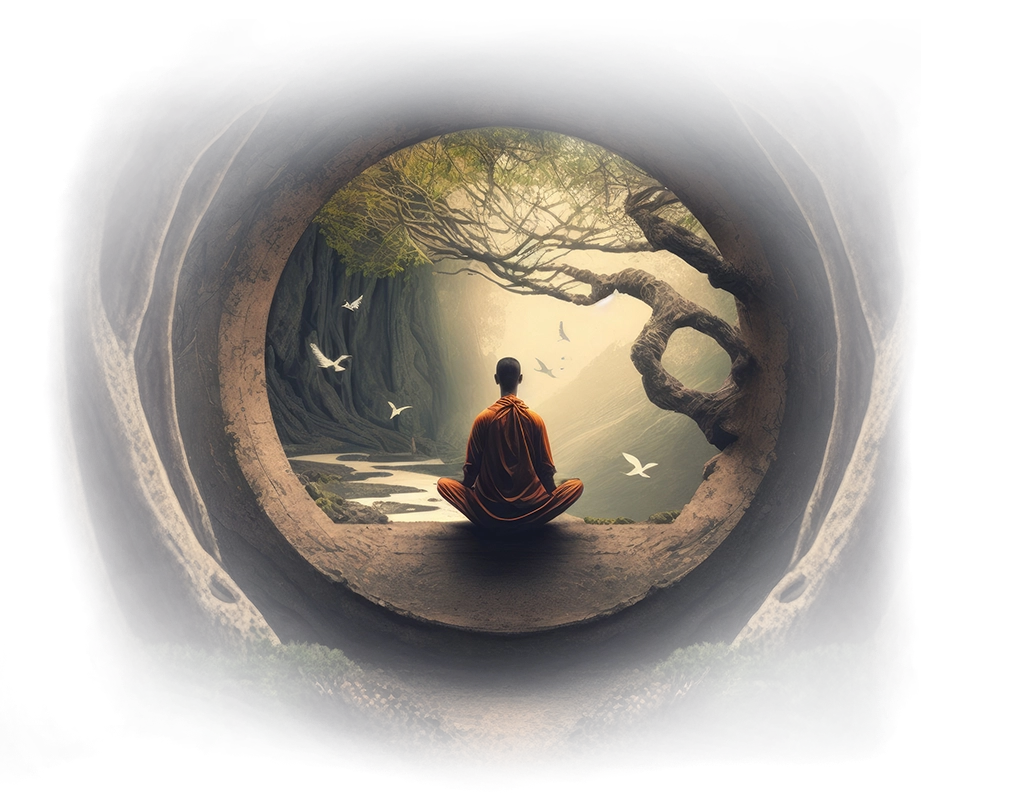
“In formulaic expression, Advaita Vedanta seeks to escape from desire; Tantra seeks to embrace desire… The Vedantin's way is one of withdrawal from the finite in order to achieve a return to the infinite. This process, however, from the Shaiva point of view is only the first stage. The next stage is the outward journey from the infinite to the finite. When perfection is achieved in man participates in the universal vibration of the absolute and shares in its essential both freedom”.
“In Patanjali's Yoga and the later Samkhya schools, liberation consists in the separation of the principle of consciousness from the principle of matter in all its dense and subtle forms”.
Gregory Shaw, Platonic Tantra - Theurgists of late Antiquity
Raja Yoga is a practice and expression of Advaita Vedanta and aligns the practitioner with the infinite unity of pure awareness that is separated from all forms and all desires. As stated by shaw, this for The Tantric practitioner is a preparatory work, or first step, to the Tantric embodiment. Although there are volumes of work one may obtain on Raja, that of Patanjali being the most famous, we have given a simple straight forward meditation here in this essay that will accomplish this in a simple format below . This Raja meditation, followed by the practice of Tantric Kundalini is a training of the imaginal light body and a practice of divine union in and of itself. We suggest, as a prerequisite to Theurgy, that the aspirant first develop a practice of Raja Kundalini for several weeks before beginning the Theurgic ritual journey.
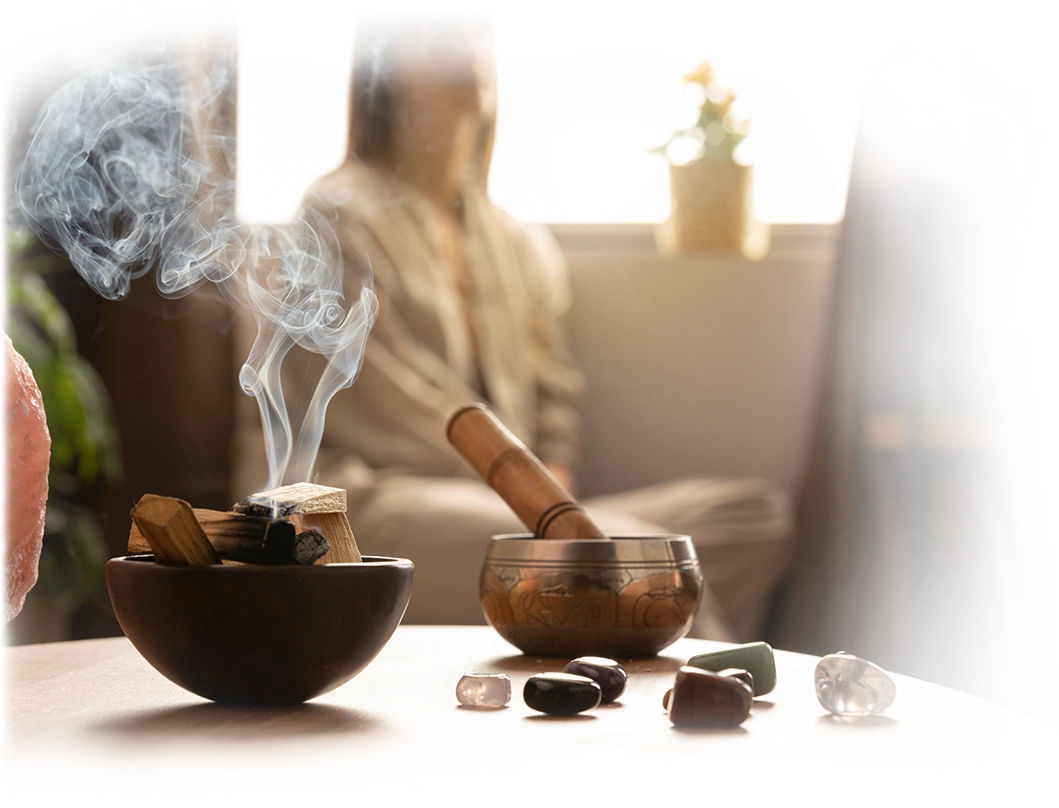
“There are an abundant number of similarities between theurgy and Tantra but perhaps the most revealing and the one most unlike the verticalist traditions of Advaita Vedanta and dualist forms of Platonism is that the physical senses are no longer obstacles to the divine but portals by which the divine enters our world and through which the soul becomes the vehicle of an incarnating god”.
“In the outward turn to the finite and material realm, the Tantric initiate participates in the universal vibration or pulse of the absolute. This, I believe, is equivalent to the lamblichean soul bestowing power, life, and the activity of wholes to the finite parts of the universe. Theurgy and Tantra trace the same path. In Tantra, it is characterized as spanda, the pulse of the infinite through the finite… In theurgy the Great Oneness is expressed through the diastolic and systolic rhythm of prohodos and epistrophe, the eternal procession and return of the One as orchestrated by the Demiurge. In both systems the finite and material is an expression of the infinite and invisible. The theurgist and Tantric initiate both partake in this divine pulsation and share in its power. In Tantra, this power is manifest in supernormal abilities called siddhis, powers that were also evident among theurgists. In both theurgy and Tantra the initiate enters into the "body" of the god through the performance of rituals. Through the chanting of mantras in Tantra and divine names in theurgy the initiate unites with the gods through their sounds, and through entering the god's audible body the theurgist and tantric initiate become that god in embodied form. Their orientation fundamentally shifts; they enter divine totalities; they assume divine power. And in both traditions to enter this pulse of divine activity: the spanda of Tantra or the proodos-epistrophe of theurgy, the initiate must first ascend to the divine cause and then descend, having become identified with the activity of the god. The crucial moment is the descent, for it is in the emanation of Great Oneness into material diversity that the soul truly enters the non-dual state where discrete objects of this world, including our bodies and the senses that perceive them, are experienced as manifestations of the One”.
Gregory Shaw, Platonic Tantra - Theurgists of late Antiquity
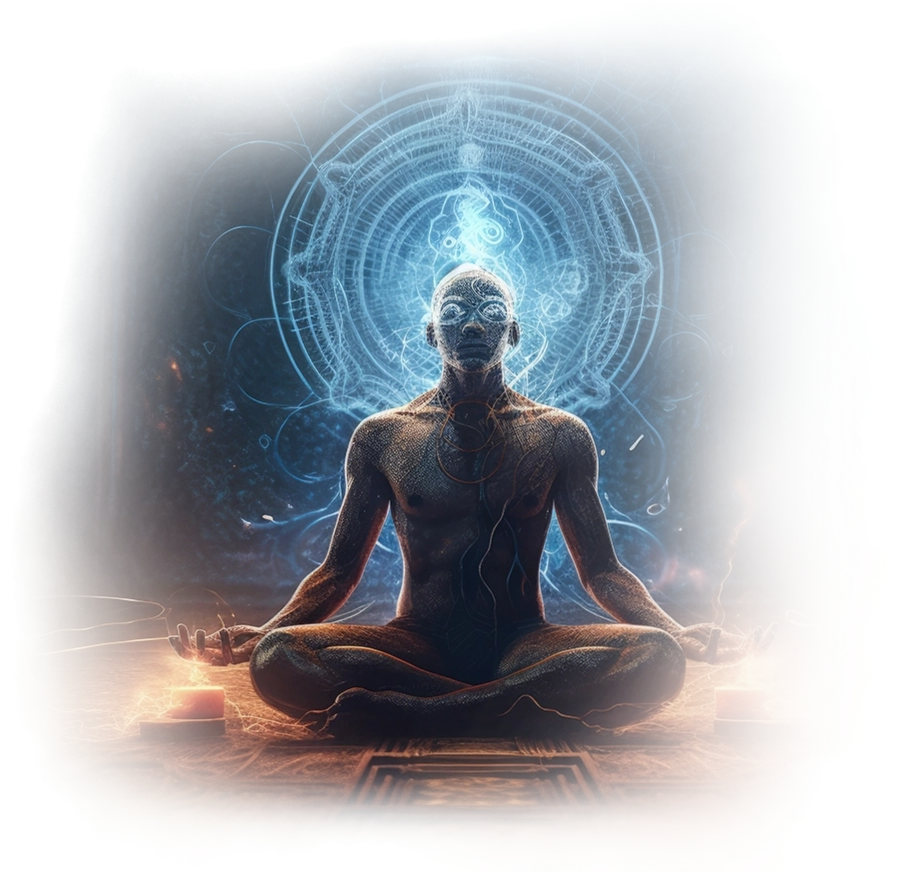
In Tantra Kundalini the practitioner engages in the merging of God Shiva and Goddess Shakti in their eternal, ecstatic dance and embrace. The “knower” the“observer” being Shiva and and the embodiment of spherical ascending dynamic energy, the Shakti. The merging with Shiva and Shakri is an energetic, visionary education of the soul preparing it for the Theurgic rites of ceremony.
“Another shared principle of theurgy and Tantra is that both traditions assert an unbroken continuity between the immaterial and material worlds; as correlate to this macrocosmic continuum they describe a microcosmic continuum, maintaining that each soul has a subtle body that functions as a mean between our immaterial spirit and our physical body: the schema of theurgists and the Sukshma sharira of Tantra. In both traditions, the degree of light in this subtle body is the index of the soul's deification.32 Iamblichus describes several techniques for intensifying this light under the rubric of photagōgia, the induction of light (lamblichus 2003: 133.19-134.8), while in Tantra the soul's deification comes through techniques that intensify awareness of prakasha (divine light) (Müller- Ortega 2004: 45-79). As the subtle body becomes filled with light it is also homologized to the cosmos, which allows the soul to assume the body of a god”.
Gregory Shaw, Platonic Tantra - Theurgists of late Antiquity
In our central doctrine we teach the physics of the Theurgic Ochêma (spherical mandala, star vehicle) and the objective photonic body of light. In our modern day lens, we have the privilege of our current sciences aiding in this unbroken Monism of reality. The physical world, that which we experience with the senses, is an embodiment of the whole, the one true reality. Borth Theurgy and Tantra have the same goal. The intensification of the divine light, the unveiling of the imaginal body, the Astral plane of the Theurgist. If you have not spent time in our central doctrine, we would highly recommend that you do. It will help solidify this realization with current scientific support.
Practicing the Raja-Kundalini of our school
will allow one to

1. Develop the ability to see one as a center of consciousness and experience, developing the“I” or the ego consciousness of the Theurgist.
2.Develop the ability to concentrate on different aspects of being in a spherical, centered framework, conditioning the Astral or imaginal body, connecting with the emotional desire for the Infinite.
3.Develop the ability to quiet the mind completely and engage in silence, a very critical component in preparation for Ritual Theurgy.
4.Develop the skills of working with psychodynamic energy that is centered at different points of the physical being from the bottom of the spine to the crown of the head.
5.Develop the ability to work with symbols, transforming them into embodied principles of centered awareness, opening one to the psychological realities of embodied states.
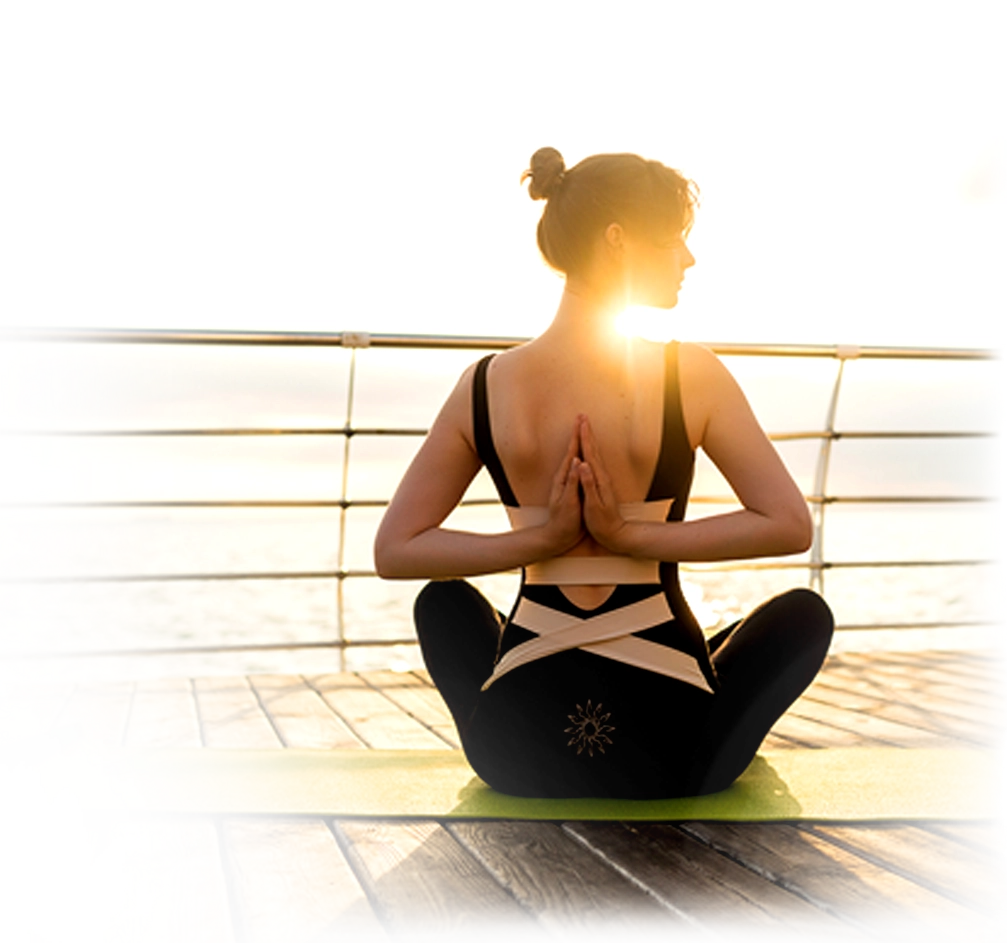
Raja Yoga is often associated with the Yoga Sutras of Patanjali, a foundational text in the field of yoga, and is sometimes also called Ashtanga Yoga, after the eight (Ashta) limbs (Anga) that Patanjali describes. The eight limbs of Raja Yoga are:
Yama: Ethical standards or moral disciplines, including non-violence, truthfulness, non-stealing, continence, and non-possessiveness.
Asana: Posture or physical exercises. This aspect is what most people in the Western world associate with the term "yoga".
Niyama: Personal practices or observances, including purity, contentment, austerity, self-study, and surrender to a higher power.
Pranayama: Breath control or breathing exercises.
Pratyahara: Withdrawal or sensory transcendence, the practice of tuning out external stimuli to focus on the internal.
Dhyana: Meditation, the expansion of the concentration practice to a broader focus.
Samadhi: Superconsciousness or enlightenment, the ultimate goal of yoga practice, a state of peace and pure consciousness.
Yama, Niyaman, and Samadhi have counterparts in Theurgy that are addressed through the Greater Arcana Tarot and Ritual Praxis of the Pentagram and Ochêma Rituals. What we focus on with this preparatory work through Raja is Asana, Pranayama, Dharana and Dhyana. Control of the breath, proper posture, concentration and the development of silence in a state of pure expanding awareness prepares the Theurgist for longer, more empowering ritual experiences. There are many good resources for Raja Yoga, we suggest purchasing and reviewing “Raja Yoga” by William Walker Atkinson as a starting point if you want to go further than the exercises we recommend in this essay. For our work, the repetitive practice of our simple meditation will go quite a ways for the practitioner.
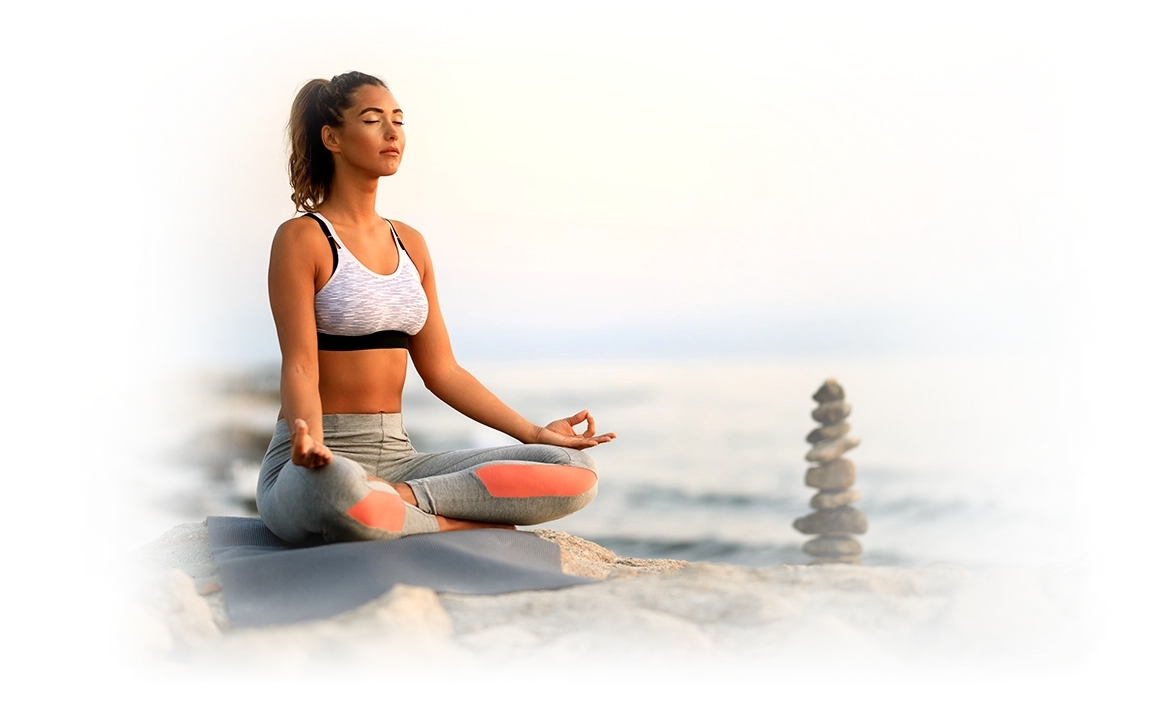
“….He must be able to distinguish between the "I" and the "Not I." And this is the first task before the Candidate. That which is the Real Self of Man is the Divine Spark sent forth from the Sacred Flame. It is the Child of the Divine Parent. It is Immortal-Eternal-Indestructible-Invincible. It possesses within itself Power, Wisdom, and Reality. But like the infant that contains within itself the sometime Man, the mind of Man is unaware of its latent and potential qualities, and does not know itself. As it awakens and unfolds into the knowledge of its real nature, It manifests its qualities, and realizes what the Absolute has given it. When the Real Self begins to awaken, it sets aside from itself those things which are but appendages to it, but which it, in its half-waking state, had regarded as its Self. Setting aside first this, and then that, it finally discards all of the "Not I," leaving the Real Self free and delivered from its bondage to its appendages. Then it returns to the discarded appendages, and makes use of them”.
William Walker Atkinson, Raja Yoga
Through the simple Raja meditation practices prescribed here in this essay the Theurgist is given a very direct way of experiencing “pure awareness”. The state of Shiva, the knower, stripped of all external conditions. This state of awareness, turning inwards coupled with the ability to set aside all that is “Not I” purifies the landscape of inner vision and assists the Theurgist with recognition of their eternal natures. This identification, control, concentration and focus allows the Theurgist the ability to suppress the normal everyday thoughts and imaginings from those that are received in divine vision. It is the “knower” that is the “I”, the unified self of Platonism, the Atman.
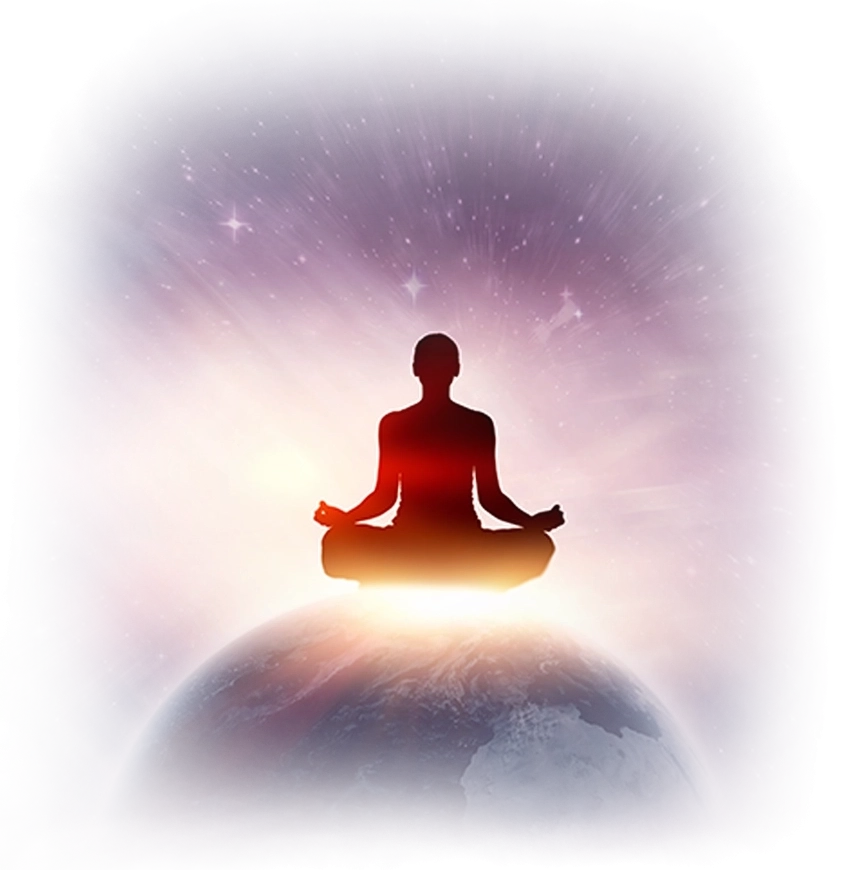
“The Candidate must first acquaint himself with the reality of the "I," before he will be able to learn its real nature. This is the first step. Let the Candidate place himself in the State of Meditation, as heretofore described. Then let him concentrate his entire attention upon his Individual Self, shutting out all thought of the outside world, and other persons. Let him form in his mind the idea of himself as a real thing, an actual being, an individual entity, a Sun around which revolves the world. He must see himself as the Centre around which the whole world revolves. Let not a false modesty, or sense of depreciation interfere with this idea, for you are not denying the right of others to also consider themselves centres. You are, in fact, a centre of consciousness-made so by the Absolute and you are awakening to 'the fact. Until the Ego recognizes itself as a Centre of Thought, Influence and Power, it will not be able to manifest these qualities. And in proportion as it recognizes its position as a centre, so will it be able to manifest its qualities. It is not necessary that you should compare yourself with others, or imagine yourself greater or higher than them. In fact, such comparisons are to be regretted, and are unworthy of the advanced Ego, being a mark and indication of a lack of development, rather than the reverse. In the Meditation simply ignore all consideration of the respective qualities of others, and endeavor to realize the fact that YOU are a great Centre of Consciousness a Centre of Power-a Centre of Influence a Centre of Thought. And that like the planets circling around the sun, so does your world revolve around YOU who are its centre”.
William Walker Atkinson, Raja Yoga
The Theurgist is a Cosmos and their world, in ritual, and in everyday life, revolves around their conscious awareness. This awareness or centrality should be cultivated in every experience from the simplest interactions to the depth of energetic Theurgic ritual praxis. Combining the disciplines of Raja and Kundalini Yoga gives the seeker a very direct way of experiencing this spherical unification as we will show further in this essay.

There are several postures found throughout the different yogic practices. The two that our school recommends, both appropriate for the practice of Raja-Kundalini is the lotus pose, or padmasana and vajrasana, sometimes referred to as seiza pose, or seated dragon. These postures should be practiced daily as a prerequisite to performing any of the Theurgic rituals. You should continue these postures in meditation until you can hold either of them comfortably for 20 to 30 minutes at a time.
The Lotus Pose, or Padmasana, is one of the most iconic and recognized poses in yoga. It's a seated posture that is often used for meditation and pranayama (breathing exercises) in both yoga and Buddhist practices.
Here is a basic description of how to achieve the Lotus Pose:
1. Start by sitting on the floor with your legs extended in front of you. Keep your spine erect.
2. Bend your right knee and gently bring it closer to your chest. Lift your right foot off the floor and hold onto it with both hands.
3. Carefully place your right foot onto your left thigh. The sole of your foot should be facing upwards, and the heel should be close to your abdomen.
4. Now, repeat the same process with your left foot. Bend your knee, lift the foot off the floor, and place it onto your right thigh.
5. Once both feet are positioned on the opposite thighs, place your hands onto your knees. You can form a circle with your thumb and index finger (Gyan Mudra) with the remaining fingers extended straight, or simply rest your hands palms-down on your knees.
6. Keep your spine straight and elongate it. You should relax your shoulders and soften your face.
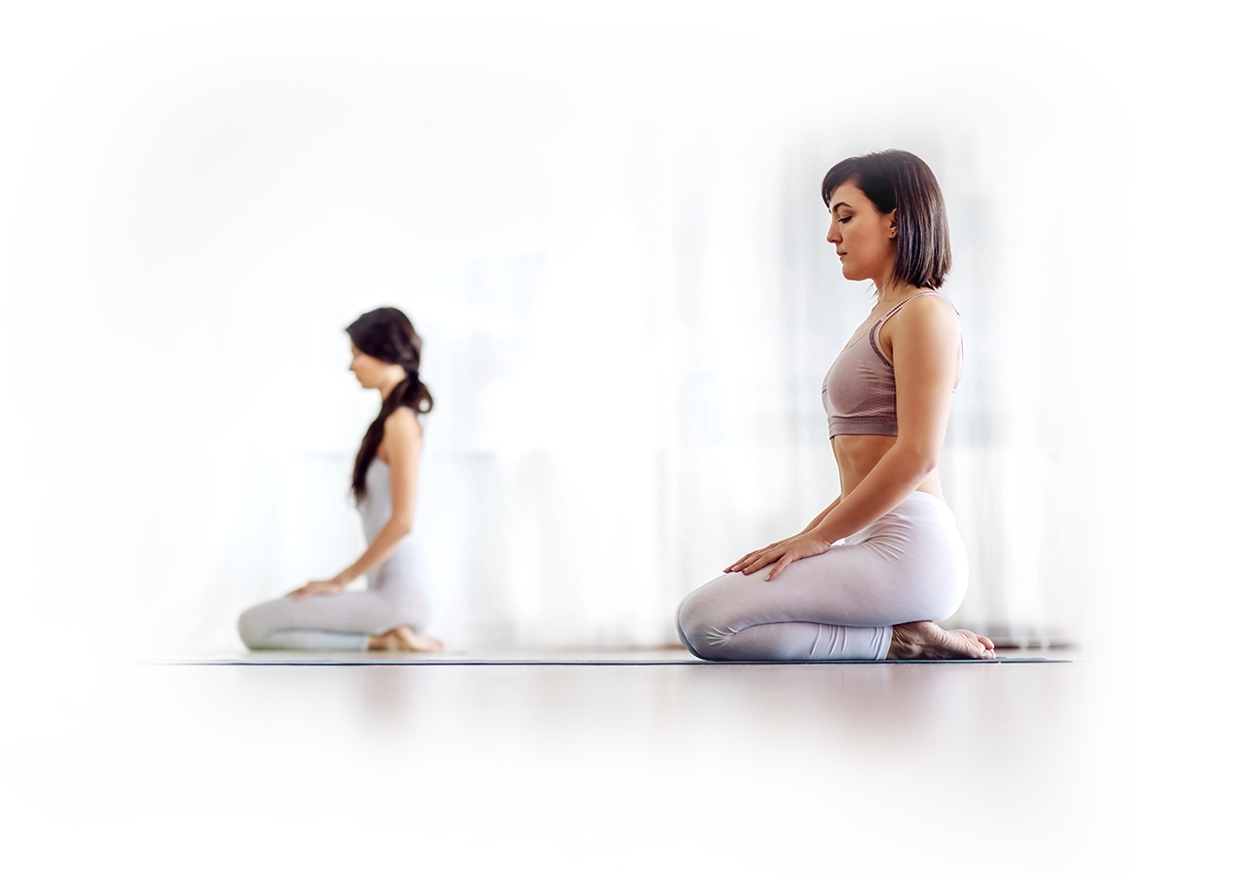
The Lotus Pose, or Padmasana, is one of the most iconic and recognized poses in yoga. It's a seated posture that is often used for meditation and pranayama (breathing exercises) in both yoga and Buddhist practices.
Here is a basic description of how to achieve the Lotus Pose:
1.Start by kneeling on a yoga mat or soft surface, with your legs and feet together. Your big toes should touch each other.
2.Lower your buttocks so that they rest on your heels. Your heels should be on either side of your buttocks.
3. Keep your spine and head straight, similar to the natural alignment when standing. Your hands should rest on your thighs, with palms down.
4. Close your eyes and take slow, deep breaths. Try to maintain this pose for a few minutes, gradually increasing the time as your comfort level improves.
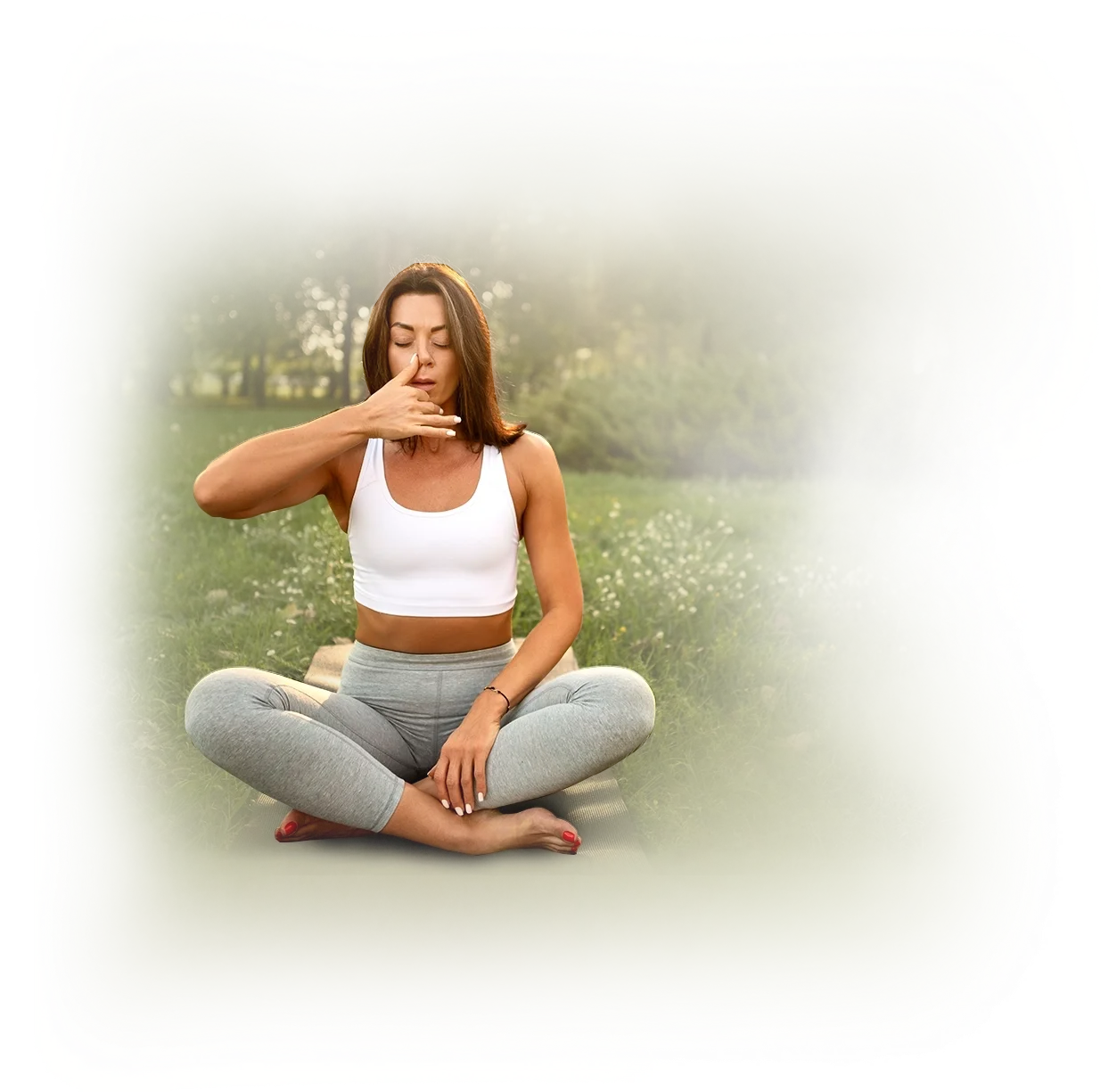
Pranayama refers to breathing exercises in yoga that help to control and regulate the flow of Prana, or life force, in the body. There are numerous Pranayama exercises. Here are some examples of pranayama techniques:
Anulom Vilom (Alternate Nostril Breathing): This involves inhaling through one nostril, holding the breath, and then exhaling through the other nostril. This is repeated with the breath being inhaled from the other nostril, creating a cycle.
Kapalabhati (Skull Shining Breath or Breath of Fire): As mentioned before, this technique involves forceful and rapid exhalation with passive inhalation.
Bhastrika (Bellows Breath): In this technique, both inhalation and exhalation are forced and involve rapid abdominal movements similar to panting.
Ujjayi (Victorious Breath or Ocean Breath): This is performed by constricting the back of the throat while inhaling and exhaling, which creates a soothing sound like the ocean's waves.
Brahmari (Bee Breath): In this practice, a humming sound like a bee is made while exhaling.
Sitali (Cooling Breath): This involves curling the tongue and inhaling through the mouth, followed by a long exhalation through the nose.
Simhasana (Lion's Breath): Here, you inhale deeply through your nose, then open your mouth wide and stick out your tongue as you exhale forcefully.
The two that we recommend practicing one, then the other before you begin your meditation as well as Theurgic practices are the Kapalabhati and Bhastrika. Switching from one for 20 seconds to the other for 20 seconds, switching back and forth three times. Between each you want to add in taking a deep breath and then holding it with the sign of silence for a short period.

The Breath of Fire, also known as Kapalabhati or Skull Shining Breath, is a breathing technique used in various forms of yoga, including Raja Yoga. It's a type of Pranayama, which is the practice of breath control.
Here is how you can do it:
1.Sit in a comfortable position, preferably with your spine straight. This could be in the lotus position or just sitting comfortably on a chair.
2.Close your eyes and take a moment to center yourself.
3.Begin by exhaling forcefully through your nose. The emphasis is on the exhale, while the inhale is more passive and natural, not forced. When you exhale, you should feel your lower belly draw back towards your spine.
4. Continue this pattern of forceful exhales and passive inhales. Aim to do about one exhale-inhale cycle per second.
5.Start by practicing this for about a minute at a time. As you become more comfortable with the technique, you can gradually increase the duration.

Bhastrika, also known as Bellows Breath, is a powerful and energizing pranayama (breathing technique) practiced in yoga. The word 'Bhastrika' translates to'bellows' in Sanskrit, a device used traditionally to fan fire, which is representative of the effect this practice is said to have on the body's inner energy.
Here's a basic way to perform Bhastrika Pranayama:
1.Sit in a comfortable position. You could sit cross-legged on the floor or on a chair, as long as you can keep your back straight.
2.Close your eyes and take a couple of deep, calming breaths.
3.Inhale deeply and forcefully through both nostrils while expanding your abdomen, and then quickly and forcefully exhale, contracting your abdominal muscles. The inhalation and exhalation should be of equal duration.
4.Continue this cycle of forceful inhalation and exhalation at a rapid pace, just like a bellows fanning a fire. Start with 10 to 20 cycles at a time.
5.After each round, return to normal breathing and observe the sensations in your body.
6.You can gradually increase the number of cycles per round over time.
Bhastrika Pranayama is said to increase the flow of Prana or life force in the body, stimulate the metabolism, and produce warmth. It can invigorate the body and mind, improve blood circulation, and help to clear the nadis (energy channels) in preparation for the practices prescribed here for Raja-Kundalini..
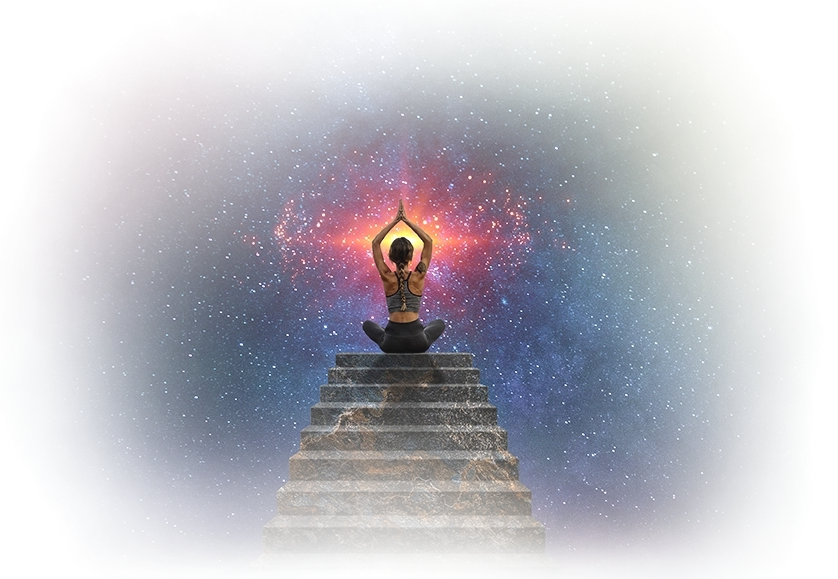
“It is one of the most prominent doctrines of Raja Yoga that the power of expelling thoughts, or if need be, killing them dead on the spot, must be attained”.
William Walker Attkionson, Raja Yoga
The following Raja meditation has the goal of preparation for Kundalini and Theurgic ritual praxis. One must achieve a state of pure awareness, one that has destroyed the “false ego”, or that which is not an aspect of that pure awareness, but an expression of one of its modes of being. There are no matras as following the pronouncements the states of Raja are done in absolute silence. This state of pure awareness, of self identification with the true “I” remains a critical focus throughout all of the practices that follow.
Achieving the Raja pure awareness meditation of Shiva
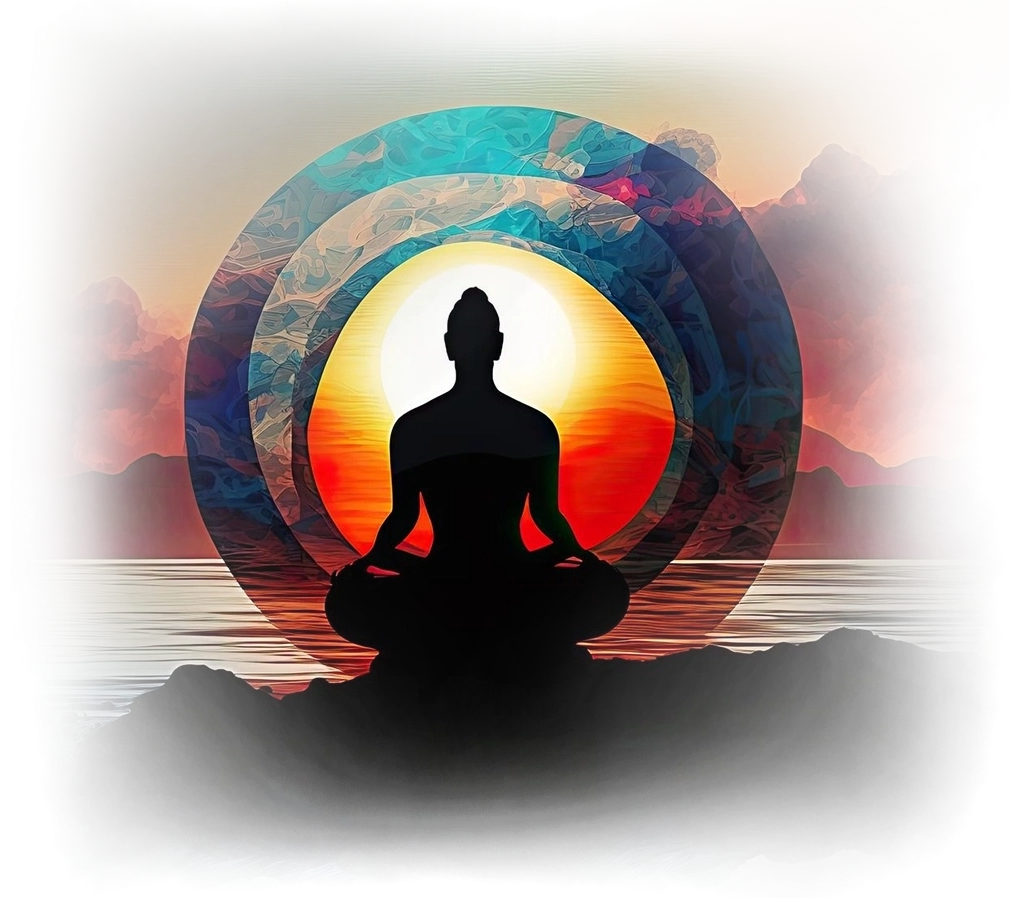
1.I am Shiva, that which is not, I am silence, center of consciousness, the knowerHold the sign of silence, invoking the Knower, Shiva, Awareness
2.My body an expression of my existence, but not ITaking 3 deep breaths Imagine the body as an expression of the ITaking 3 deep remove the body from your awareness, set it aside.
3.My emotions an expression my existence, but not ITaking 3 deep breaths Imagine the emotions as an expression of the ITaking 3 deep remove the emotions from your awareness, set them aside.
4.My thoughts, an expression my existence, but not ITaking 3 deep breaths Imagine your thoughts as an expression of the ITaking 3 deep remove your thoughts from your awareness, set it aside.
5.My life, an expression of my existence, but not ITaking 3 deep breaths Imagine your life as an expression of the ITaking 3 deep remove all the details of your life from your awareness, set it aside.
6.I am Awareness, I am silence, Shiva, the knower, the observer, infinite, eternalTaking 3 deep breaths Imagine time and space as an expression of the ITaking 3 deep breaths remove time and space from your awareness, set it aside.
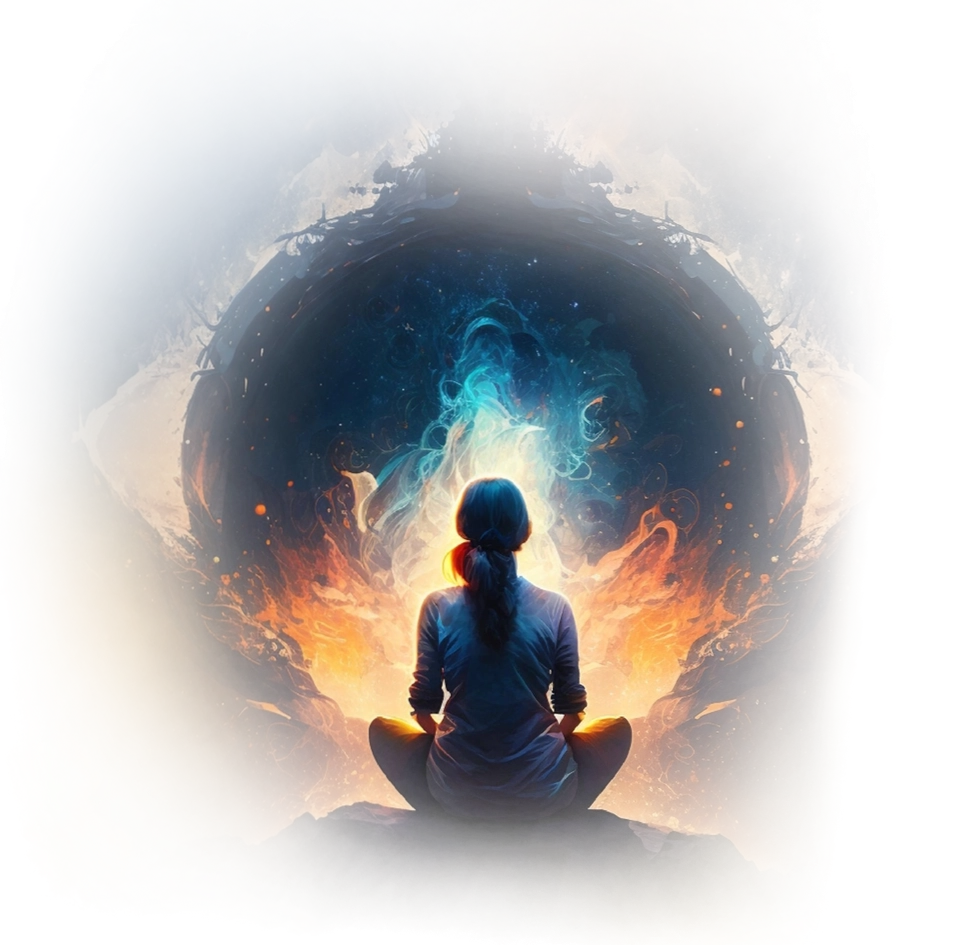
Within Raja meditation practices there are several different practices for focusing the attention on symbols and a singular set of images. Investigating into the different teachings available the student can find quite a number of resources. By combining the practice of Kundalini Yoga it naturally gives this concentration without having to practice separately within the development, discovery and meditations upon the Chakras. There are many places you can learn more about pure Raja meditations, but we here suggest that by combining Kundalini with Raja you are able to accomplish the same if not a more realized form of this concentration.
“The Kundalini is represented in the form of a serpent coiled around the spine that lies sleeping in muladhara, the lowest chakra. Feuerstein defined the Kundalini as "a microcosmic manifestation of the primordial Energy, or Shakti. It is the Universal Power as it is connected with the finite body-mind." The object is to awaken Kundalini through ritual practices and to enable her ascent up the susumna nadi through the Chakra system. When it reaches the top most Chakra the blissful Union of Shiva and Shakti occurs. This leads to a far-reaching transformation of the personality”.
“The presiding deities of the chakras were originally tantric goddesses”.
Gregory Shaw, Platonic Tantra - Theurgists of late Antiquity
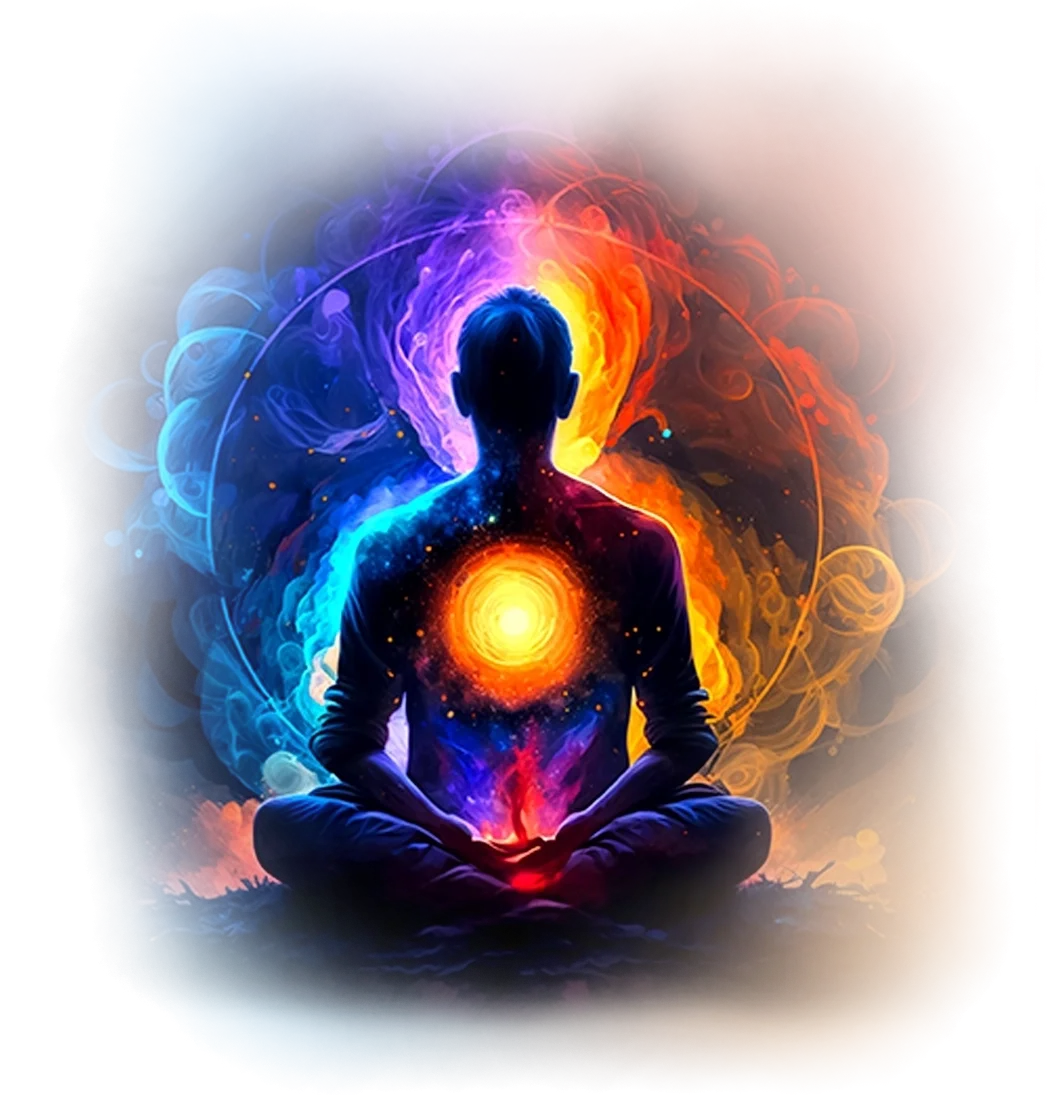
In Authentic Tantra Kundalini the Chakras are each a world in and of itself ruled by Goddess energies, a specific deity within each. Although we find this worth developing for those of you that would like to explore Tantra and Kundalini further, for our current purposes we attribute the entirety of the Chakra systems and the dynamic rising Kundalini energy to the Goddess Shakti. Shakti is the embodiment of the dynamic spherical forces that the Chakras open the aspirant too as one concentrates on a “weaving” of energy drawn up from one center to the next. These rise up the spine from the root Chakra, the muladhara, to the crown, the thousand petaled lotus, Sahasrara. The “knower” Shiva, pure awareness, comes to realization of Shakti, the divine energy , as it travels up the spine, changing from one world to the next in experience, until they are fully united, Shiva-Shakti in the ecstasy of Sahasrara.
Not only, as we have shown, is Tantra and Theurgy similar, the energetic system of the Kundalini was intuited by Plato himself. The following is from the Timaeus. It is similar to the caduceus, the nadis, the two intertwining channels of the Kundalini system with the sushumna down the middle. If we link the following image with the “eye of the soul” mentioned in the Republic, it is very similar to the chakra system, showing how these “centers of awareness” are a natural development of esoteric investigation.
"Now after the superior powers had created all these natures to be food for us who are of the inferior nature, they cut various channels through the body as through a garden, that it might be watered as from a running stream. In the first place, they cut two hidden channels or veins down the back where the skin and the flesh join, which answered severally to the right and left side of the body. These they let down along the backbone, so as to have the marrow of generation between them, where it was most likely to flourish, and in order that the stream coming down from above might flow freely to the other parts, and equalize the irrigation. In the next place, they divided the veins about the head, and interlacing them, they sent them in opposite directions; those coming from the right side they sent to the left of the body, and those from the left they diverted towards the right, so that they and the skin might together form a bond which should fasten the head to the body, since the crown of the head was not encircled by sinews; and also in order that the sensations from both sides might be distributed over the whole body".
Gregory Shaw, Platonic Tantra - Theurgists of late Antiquity
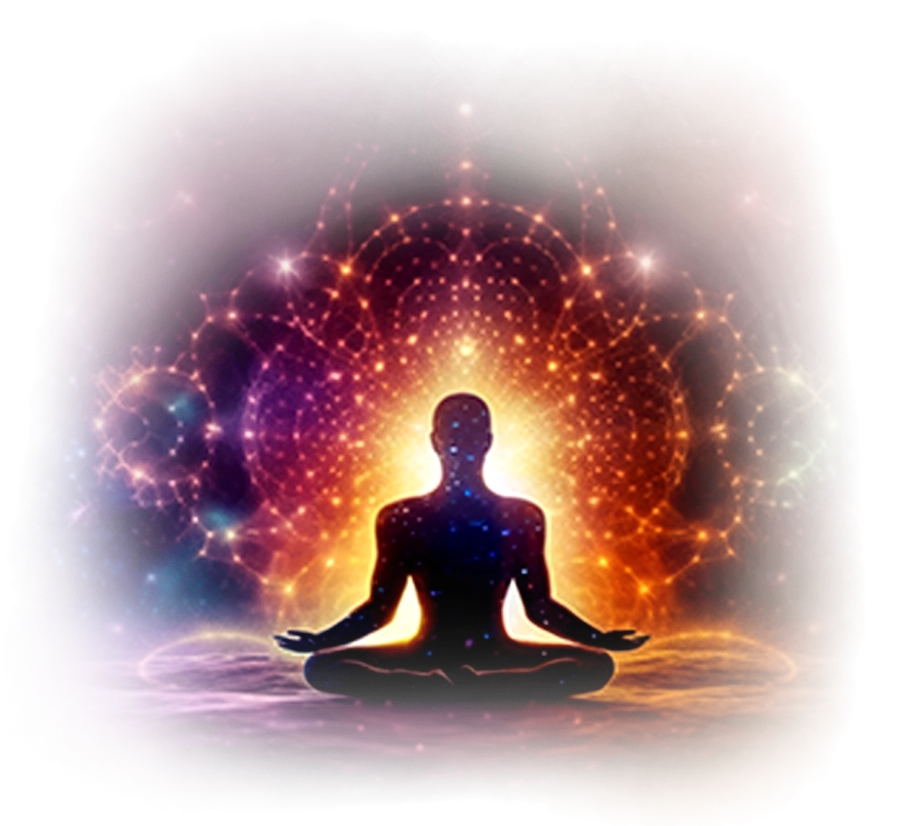
Carl Jung recognized the healing and unifying psychological nature of Kundalini Yoga and found it to be an eastern equivalent to accomplishing much of the same as depth psychology.
“Indian philosophy, is namely, the interpretation given to the precise condition of the non-ego, which affects our personal psychology, however independent from us it remains. It sees the aim of human development as bringing about an approach to and connection between the specific nature of the non-ego and the conscious ego. Tantra yoga then gives a representation of the condition and the developmental phases of this impersonality, as it itself in its own way produces the light of a higher suprapersonal consciousness”.
“…the psychology of tantric yoga, what I have hitherto called mandala psychology”.
C.G. Jung, The Psychology of Kundalini Yoga
One of the major contributions that Carl Jung brought to the practice of Kundalini Yoga, and one that will continue through to our Theurgic journey, is the relationship self realization has to the Unconscious. In his work he explained that the Chakras are entire worlds of centralized mandala experience that remained Unconscious, set to be discovered by the practitioner, through the ritual practices of Kundalini. From his statement above the “conscious ego” is Shiva, awareness and the “non-ego”, the impersonality, is Shakti the divine energy of the visionary state set to unite with Shiva. Shakti is unconscious and becomes “known” to Shiva as the practitioner develops a meditation practice over extended periods of time.

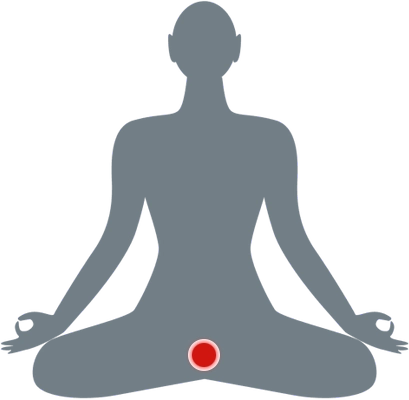
ROOT CHAKRA
Each of these mantras are resonated in full three times with a deep breath between each holding the sign of silence. As you focus on each of the Chakras, from the root to the crown, hold each Chakra in your imaginal body as you move up the spine. You want to allow the Chakra you are focused on to be a full embodiment, and the others to act just as centers as you move from one to the next.
Muladhara: (Root chakra) Grounding Meditation —
Location: The base of the spine, in the tailbone area
Color: Red
Meaning: Physical identity, stability, grounding
Pronouncement: I am connected and rooted in the earth, I am stable.
Resonate: Llllllaaaaaaammmmmmmmmmmm
Imagine entering the Muladhara chakra and grounding deeply into the earth. Feel the health and harmony of the earth drawing deeply into the body drawing the energy upwards. Visualize a red glowing sphere at the base of your spine. This chakra represents your foundation and sense of security.
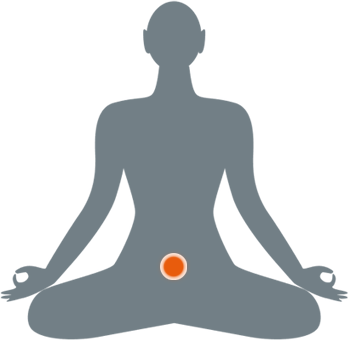
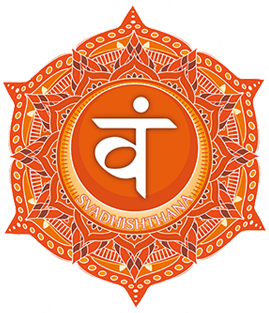
SACRAL CHAKRA
Svadhisthana (Sacral chakra) Creative Meditation —
Location: Just below the bellybutton, just above the pubic bone
Color: Orange
Meaning: Sexuality, pleasure, creativity
Pronouncement: I am potent with the passions of life, in control and directed
Resonate: Vvvvvaaaaaaammmmmmmmmmmmmm.
Imagine entering the Svadhisthana chakra and drawing the energy of the earth, feeling the pleasure of the body radiating further up drawing the energy from the Muladhara into the Svadhisthana. Visualize an orange glowing sphere in your lower abdomen. This chakra is linked to creativity and pleasure.
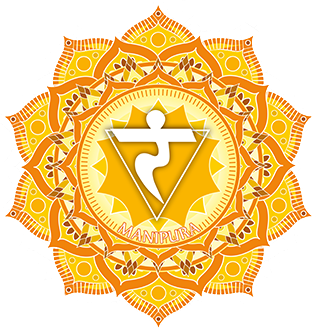
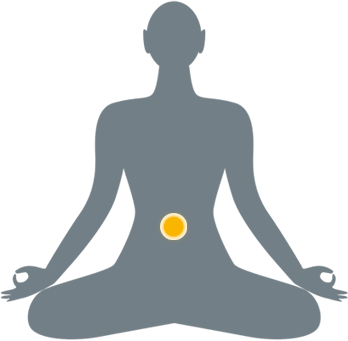
SOLAR PLEXUS CHAKRA
Manipura (Solar Plexus chakra) Power Meditation -
Location: The upper abdomen, in the stomach area
Color: Yellow
Meaning: Self-esteem, confidence
Pronouncement: I am centered in my personal power, my world revolves around me
Resonate: Rrrrrrrraaaaaaaammmmmmmmmm.
Imagine entering the Manipura chakra and drawing the creative forces of the Svadhisthana up into a centered, stable, solar force. Visualize a yellow glowing sphere in your stomach area. This chakra is connected with personal power and self-confidence. Using the mantra "Ram," visualize your self-confidence growing with every breath.
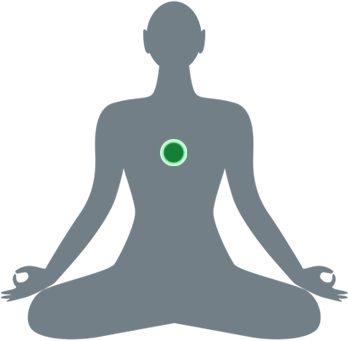
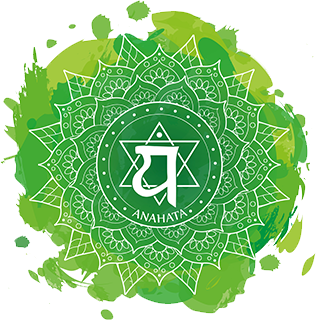
HEART CHAKRA
Anahata (Heart Chakra) Loving-Kindness Meditation -
Location: The center of the chest, just above the heart (the area called the “heart center” in some yoga classes
Color: Green
Meaning: Love, compassion
Pronouncement: I am compassionate and love openly, I welcome others with kindness
Resonate: Yyyyyyyaaaaaaaaaammmmmmmm
Imagine entering the Anahata chakra drawing the stable forces of the Manipura chakra up into a radiating loving force. Visualize a green glowing sphere in the center of your chest. This chakra is associated with love and compassion, for the self and all others.
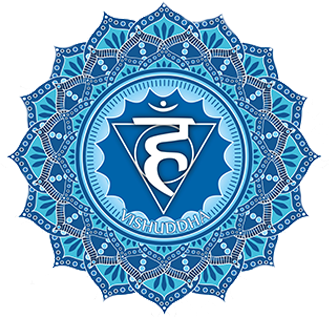
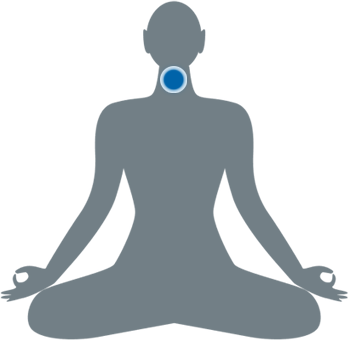
THROAT CHAKRA
Vishuddha (Throat Chakra) Expression Meditation -
Location: The throat
Color: Blue
Meaning: Communication
Pronouncement: I speak clearly and honestly to myself and others
Resonate: Hhhaaaaaaaaaammmmmmmmmmm
Imagine entering the Vishuddha chakra drawing the loving compassion of the Anahata chakra up into the expressive force of truth in speech. Visualize a blue glowing sphere in your throat. This chakra is linked to communication and truth. Imagine the resonant vibratory energy tuning the voice towards “truth in sound”.
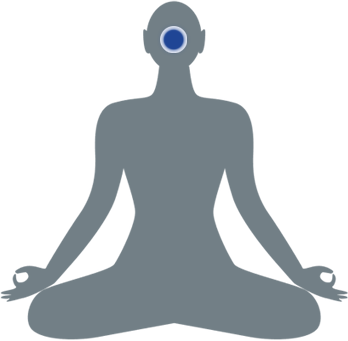
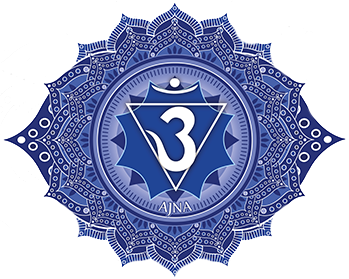
THIRD EYE CHAKRA
Ajna (Third Eye Chakra): Intuition Meditation -
Location: Between the eyes, on the forehead, which is why it’s also known as the “brow chakra”
Color: Indigo
Meaning: Intuition, imagination
Pronouncement: I speak clearly and honestly to myself and others
Resonate: Hhhaaaaaaaaaammmmmmmmmmm
Imagine the truth is speech, personal truth energy of the Vishuddha chakra drawing up into the visual spectrum of the Ajuna. Draw in the energy of “truth in sight”. Visualize an indigo glowing sphere in the middle of your forehead. This chakra is associated with intuition and inner wisdom.
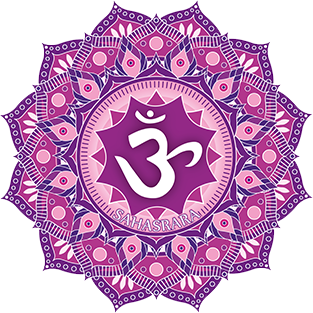
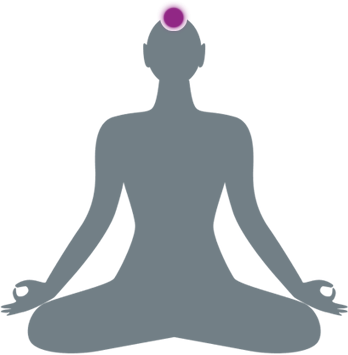
CROWN CHAKRA
Sahasrara (Crown Chakra): Divine Connection Meditation -
Location: The very top of head
Color: Violet or white
Meaning: Intuition, imagination
Pronouncement: I am one with all of life, one with the Divine, unified in spirit
Resonate: Hhhaaaaaaaaaammmmmmmmmmm
Imagine the truth in sight of the Ajna being drawn to the top of the head connecting with the spiritual, highest connection of spirit. Visualize a violet glowing sphere or white light at the top of your head. This chakra is associated with spiritual connection and enlightenment. Focus on connection to the infinite unity of spirit.


